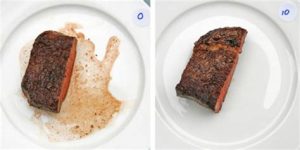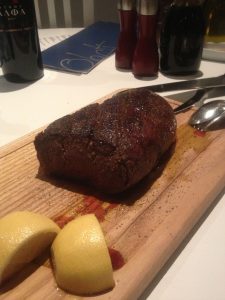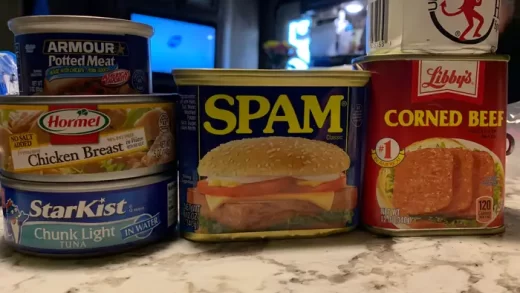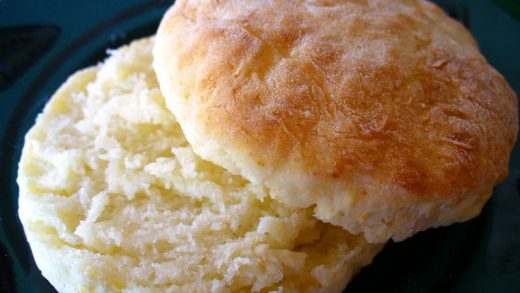“If you don’t eat yer meat, you can’t have any pudding. How can you have any pudding if you don’t eat yer meat?”
– Pink Floyd, Another Brick in the Wall
The message of this post is:
Rest Your Meat!
No matter what you’re heating, in the oven or in the microwave or even on the stovetop, let your food rest for at least five minutes. This does an amazing thing to your food. It evens out temperatures, it allows juices to return to their right place and it lets food get to a comfortable temperature for eating.
Why I hear you ask? Well, in the case of meat, it’s all science.In the book How to Cook Meat, authors Chris Schlesinger and John Willoughby state that as meat proteins are heated during cooking, they start to squeeze out some of the moisture inside their coiled structures and in the spaces between the individual molecules. The heat drives this liquid toward the center of the meat. In the book CookWise, author Shirley O. Corriher reveals a bit more detail: as meat proteins cook, they begin to shrink. Up to 120°F, the proteins shrink in diameter only and there is little moisture loss, but above 120°F the proteins also begin to shrink in length, which really puts the squeeze on moisture. By 170°F, most of the moisture is squeezed out of a lean piece of meat.

As meat rests, this process is partially reversed. The moisture that is driven toward the center of the meat is redistributed as the protein molecules relax and are able to reabsorb some moisture. As a result, less juice runs out of the meat when you cut into it. Willoughby claims that if you cut into meat right away, almost twice as much liquid is lost than if you let it rest before carving.
Not just meat
In my experience, this applies to more than just meat. How often have you noticed that the instructions for food going into the microwave suggests the food rest for few minutes? The reason is that food located close to the edge will be hotter than food in the center of the dish. Resting allows that difference to equalize, at least a little bit.
Another thing to keep in mind is what’s called carryover cooking. That means after the dish is removed from the heat, the heat is still in the food and continues cooking the food. That’s why it’s important if using a thermometer to determine when food is done to stop about 5-degrees short of the goal. Carryover will take it the rest of the way.
But I Don’t Want Cold Food
How long should food rest? I say two to five minutes for most foods, but a lot depends on the type and thickness of the food. Steak or chicken should rest five to 10 minutes. Thick chops and small roasts, about 10 to 15 minutes. Large roasts and whole turkeys, about 30 minutes. If it’s a plate of leftovers coming out of the microwave, one to two minutes.
When resting food, keep it covered with a loose tent of foil. This holds in some of the heat on the surface of the meat while allowing excess steam to escape. This keeps the food from getting mushy or soggy while not interfering with the moisture redistribution inside the food. And let it rest in something that will catch any juices that come out of it.
I say, let all cooked food rest for a few minutes. Then you’ll be able to taste the food instead of burning your tongue. It might make a big difference.



